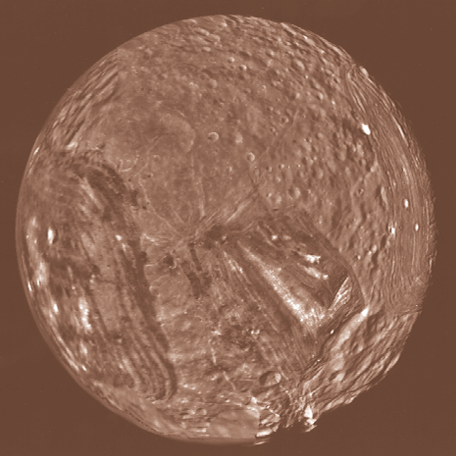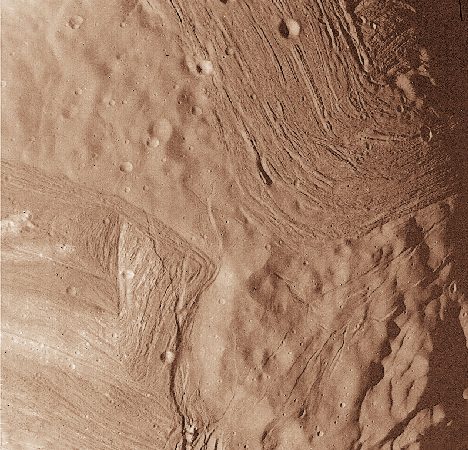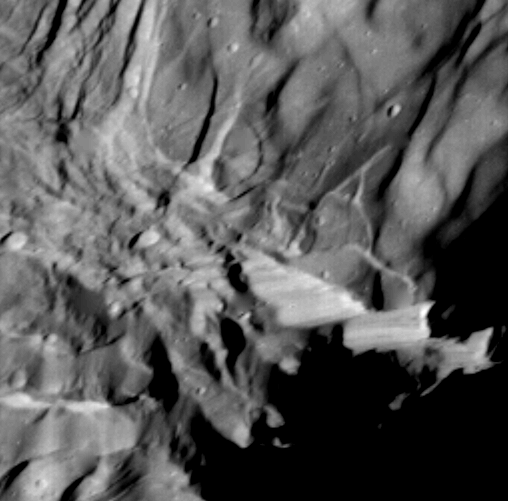

Miranda:
Miranda is one of the satellites of Uranus with a diameter of 470 kilometers. Miranda was named after the daughter of the magician Prospero in Shakespeare's play The Tempest.
Its surface is unlike anything in the Solar System with features that are jumbled together in a haphazard fashion. Miranda consists of huge fault canyons as deep as 20 kilometers terraced layers and a mixture of old and young surfaces.

It is believed that Miranda may have been shattered as many as five times during its evolution. After each shattering the moon would have reassembled from the remains of its former self with portions of the core exposed and portions of the surface buried.

Given Miranda's small size and low temperature (-187C or -335F), the degree and diversity of the tectonic activity on this moon has been surprising. It is believed that an additional heat source such as tidal heating caused by the gravitational tug of Uranus must have been involved. In addition, some means must have mobilized the flow of icy material at low temperatures.

This high-resolution image of Miranda was acquired by Voyager 2 on January 24, 1986, when the spacecraft was 36,25O kilometers (22,5OO miles) from the Uranian moon. In this clear-filter, narrow-angle image, Miranda displays a dramatically varied surface. Well shown at this resolution of 66O meters (2,16O feet) are numerous ridges and valleys -- a topography that was probably produced by compressional tectonics. Cutting across the ridges and valleys are many faults. The largest fault scarp, or cliff, is seen below and right of center; it shows grooves probably made by the contact of the fault blocks as they rubbed against each other (leaving what are known as slickensides). Movement of the down-dropped block is shown by the offset of the ridges. The fault may be 5 km (3 mi) high, or higher than the walls of the Grand Canyon on Earth.